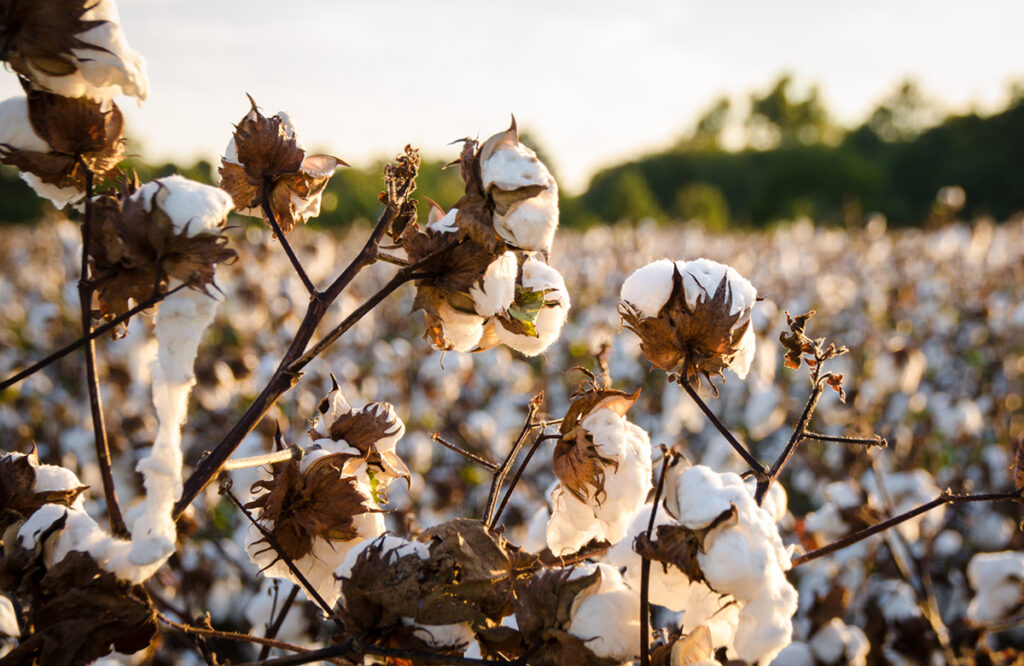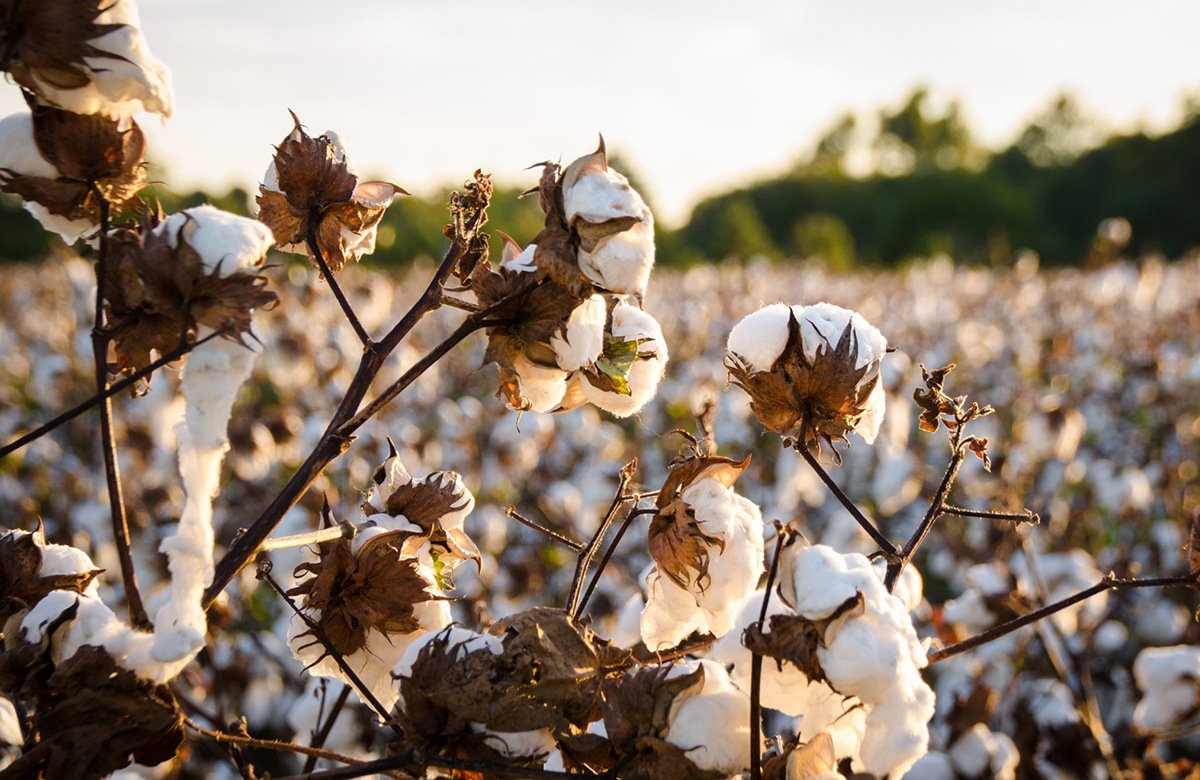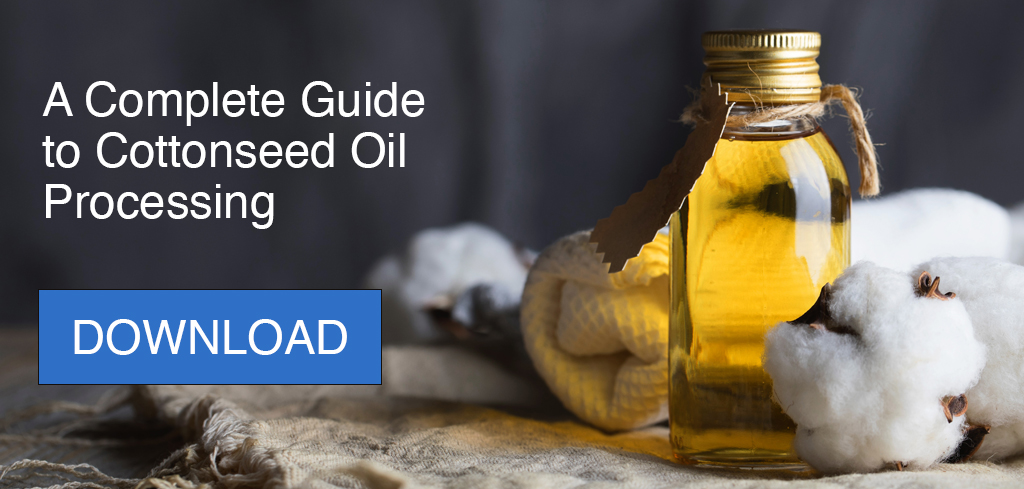
Around the world, cotton is primarily grown to make the fluffy white fiber found in bedsheets, t-shirts, and blue jeans. For most of this crop’s history, the seeds were just a byproduct of textile production—even though the plants produce twice as much seed as fiber. It wasn’t until the early 20th century that processors began pressing cottonseed oil from the seeds to serve a range of applications beyond fabric, from shortening and snack foods to cosmetics and fuel.
Cottonseed oil production is rife with challenges, though. The fluffy white fibers and abrasive hulls can be difficult to separate from the oil-rich kernels; the seeds also contain a toxic substance called gossypol that processors must deactivate. Without the right equipment, cottonseed processing can cause a mess and can even pose a safety hazard.
By understanding how to press cottonseed oil safely and efficiently, processors can squeeze the maximum value from these once-overlooked seeds.
Cottonseed production
Cottonseed production is quite an involved process, from picking the fluffy crop to processing its tiny seeds. For most of history, dating back to the fifth millennium B.C., production depended on manual labor. Early hand-held rollers helped farm workers in India separate the fluff from the seeds as textile production expanded.
However, these Indian tools weren’t designed for the cotton varieties grown in the southern U.S., which had to be painstakingly separated by hand at the rate of about one pound per day. When a young inventor named Eli Whitney learned about this labor-intensive process while visiting a plantation in Georgia, he set out to solve the problem. By 1793, he invented a mechanical cotton gin that revolutionized the industry, cleaning up to 50 pounds of cotton daily.
For every pound of cotton ginned, these machines pulled out two pounds of seeds. Initially, farmers fed these seeds directly to their cattle as a source of balanced energy, protein, and fiber. It wasn’t until the mid- to late-1800s that processors started to look beyond the whole cottonseed for new product potential.
America’s first cottonseed oil mills opened in the 1830s, and by 1850, U.S. cotton production grew to nearly 3 million bales a year. The seed’s oil had become the primary source of vegetable oil in the country by 1890, and by 1900, the U.S. was crushing more than 2 million tons of cottonseed. The oil’s cooking potential was driven by popular products like Crisco, which was short for “crystallized cottonseed oil,” and Wesson cooking oil.
Although soybeans took over the global vegetable oil market after World War II, cottonseed remains a leading cash crop in America and one of the top five oilseeds in the world, with global production of about 4.5 million tonnes. While cotton production still focuses on fiber, its oil makes up 15% of the market.
Read: Deactivating Toxic Gossypol in Cottonseed Meal
Pre-treating cottonseed
The soft, fluffy fiber commonly recognized as cotton is called “lint.” It grows in protective burred casings called bolls, which pop open on the plant when mature. Cotton gins separate most of these white lint fibers for textile production, but thin hairs of fuzzy cellulose, called “linters,” remain stuck to the seeds.
Whole cottonseeds contain 23% protein and 20% fat inside the kernel, and 24% crude fiber from the linters. Hulls make up another 25% of the weight. While some oil mills process whole raw seeds, the linters stick to the processing equipment, clogging conveyors and bins. Many plants add delinting and dehulling machines to remove the sticky linters and abrasive hulls, which can boost the fat content of the seeds to 30% and improve the protein concentration of the meal.
The byproducts removed during cottonseed processing serve valuable market needs of their own. Linters are used to make paper currency, computer screens, x-ray films, and explosives. Hulls are used as roughage to supplement animal feed or burned to power oil mills and refineries.
Cottonseeds contain one other component that should be deactivated before consumption: a chemical compound called gossypol. Cotton plants produce this pigment as a natural insect repellent in the field, but it causes problems further down the food chain when it hits single-chambered digestive systems. That means swine, poultry, and humans have trouble digesting it. Ruminant animals like cattle with multi-chambered stomachs can handle higher levels but still show cumulative effects of toxicity, such as:
- Respiratory issues
- Heart failure
- Infertility and reproductive problems
However, gossypol is only toxic in its free state. Treating cottonseed with heat forces the gossypol to bind to solid proteins in the meal, deactivating the toxic compound to make cottonseed products safe for consumption.
Read: Sequence of Operations is Critical for Oilseed Processing
Processing cottonseed
Traditional cottonseed oil mills used multiple pieces of machinery to crack, flake, cook, and dry the delinted seed material. But using an extrusion system like the Anderson Dox™ Extruder streamlines this process with a smaller equipment footprint and lower energy costs. Even whole “fuzzy cottonseed” can be fed directly into the Dox, which does the work of several rollers and stacked cookers to quickly cook, dry, and shear the cottonseeds in a single machine.
The high-pressure extrusion cooking process effectively detoxifies the free gossypol, binding it to the meal. Meanwhile, the heat and pressure in the Dox rupture the cells to release the oil for easier recovery.
After extrusion, cottonseed can be fed into a screw press like the Anderson Oil Expeller®, which uses physical force to separate the oil from the solid meal. Processing cottonseed with a combination of extrusion cooking and Expeller® pressing can reduce oil residuals to less than 6% while minimizing toxins.
Cottonseed oil potential
One ton of crushed cottonseed yields about 45% meal, 27% hull, 16% crude oil, and 8% linters. The meal, like the hulls, typically end up in the animal feed market, while the oil serves a growing variety of diverse applications.
As one of the most unsaturated edible oils, cottonseed oil is considered a healthy edible oil that can reduce saturated fat intake. Unlike many vegetable oils, it is naturally stable for high-temperature cooking and frying without any hydrogenation — which can create unhealthy trans fats. Refined cottonseed oil’s neutral taste, high smoke point, and long shelf life (thanks to antioxidant tocopherols like vitamin E) make it popular for frying snack foods like potato chips and making products like shortening, margarine, mayonnaise, and salad dressing.
Outside the food industry, the oil is used to make soaps, candles, cleansers, and cosmetics. Its smooth texture and natural antioxidants help moisturize and soothe skin, even protecting against infection.
Additionally, it is finding a range of industrial applications, from chemical manufacturing to roofing to the production of biodiesel. It can even be used as a natural insecticide, putting its gossypol content to good use by keeping pests away from other crops.
Cottonseed has become much more than just a byproduct. Its production presents a growing potential for processors who can optimize their approach to pressing this challenging, fuzz-covered, toxin-containing seed.
The Anderson difference
Anderson International has decades of experience processing this seed, dating back to the mid-20th century when America’s early cottonseed mills were built around our presses. Our seasoned expertise and specialized equipment can help you optimize your oil mill to tap into the opportunities this crop offers.

